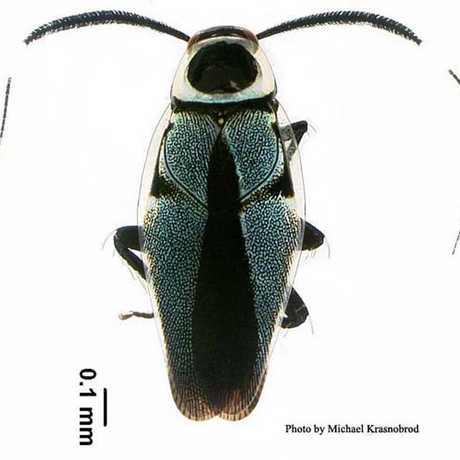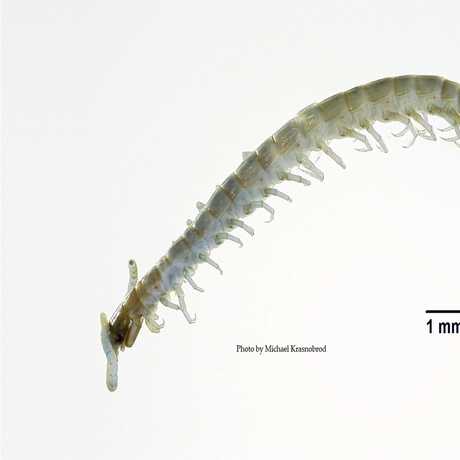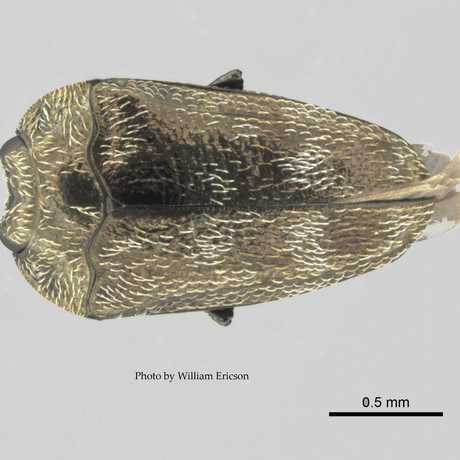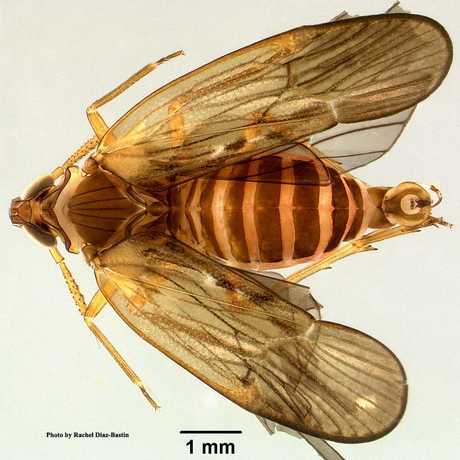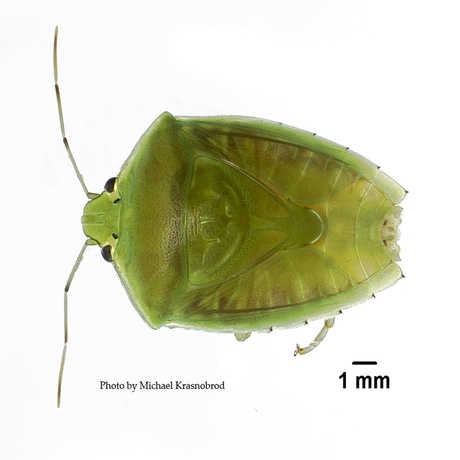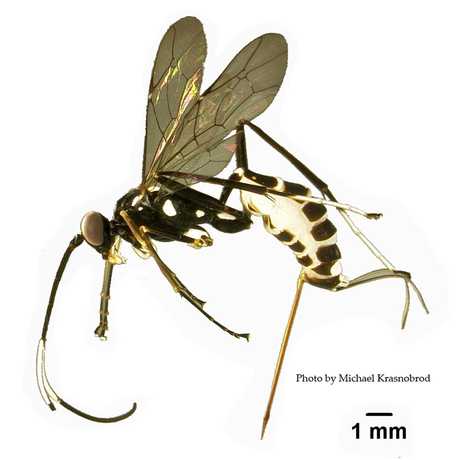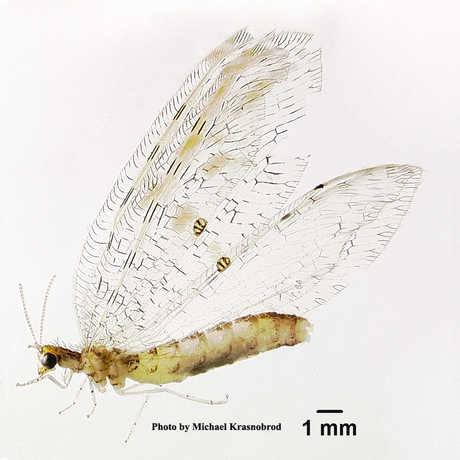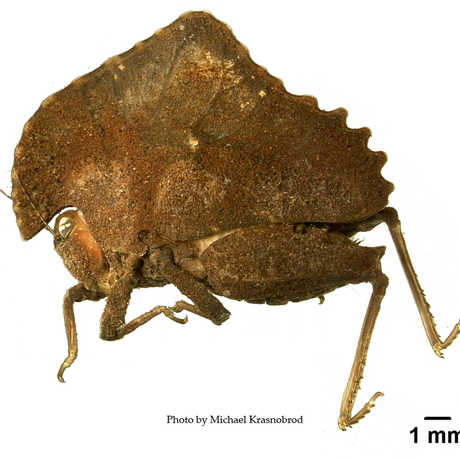All together 52 of the samples contained spiders. They were sorted and stored in the -20F freezer. Tracy Audicio then sorted them to family.
There was one large, brightly colored species collected in the genus Macracantha. It has a bright yellow abdomen with scattered black spots. The underside of the abdomen is black with scattered, small, bright yellow spots with two reddish brown eye spots laterally and a pair of small spines medially towards the end of the abdomen. However, what stands out the most are two enormous extensions of the abdomen laterally becoming slightly expanded and covered with hairs at the tips.
